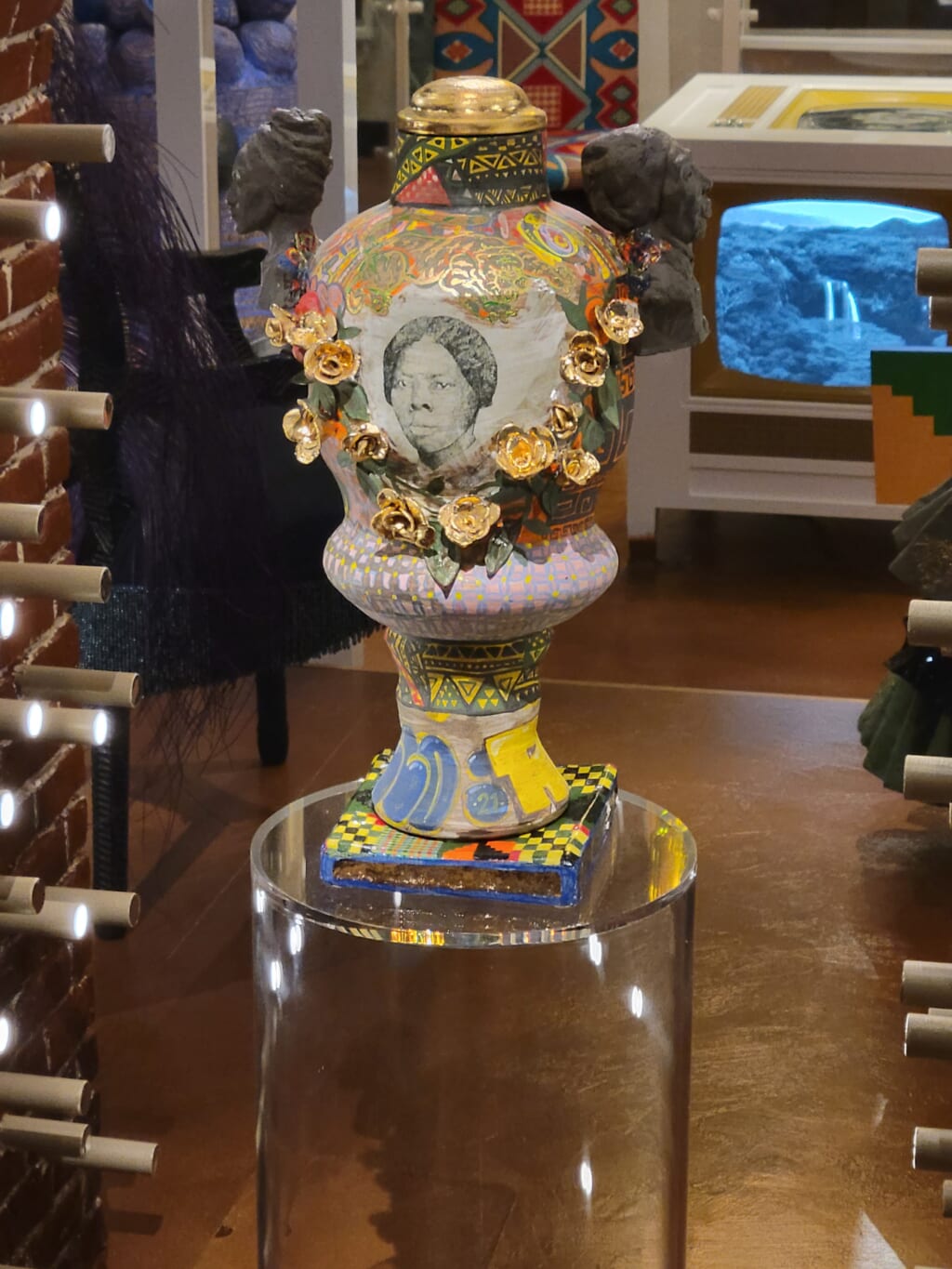It may be purely coincidental that the latest Black-centric exhibit in The Metropolitan Museum of Art’s Period Room is surrounded by European decorative arts and sculptures and American exhibitions, but it sure does drive a point home in a very definite and poignant way.
“Before Yesterday We Could Fly: An Afrofuturist Period Room” happens to be nestled between the displays of a gaudy British art section, featuring an alabaster bust of the Duke of Wellington and Queen Elizabeth I as well as 17th-century luxury furniture from England and Italy, and an array of medieval arms and armor.
Why is this so appropriate? Because the Afrofuturist Period Room shines a spotlight on the long-forgotten Black American community of Seneca Village. It’s an unintentional microcosm of how the heritage of the privileged continues to supplant the history and progress of the oppressed.
“Before Yesterday We Could Fly,” opened on Nov. 5. The exhibit’s title is based on Virginia Hamilton’s legendary retellings of Black folktales, The People Could Fly. The surrealistic, esoteric and sociopolitical art and artifacts represent the bustling community of Black Americans in 19th-century New York City, and it should be required visiting if you’re in the Big Apple, if only to learn the history of Seneca Village.

Freed Blacks purchased and resided in the Manhattan neighborhood that stretched from West 82nd St. to West 89th St. as far back as 1825, according to The New York Times. Seneca Village predated Tulsa’s Greenwood district and Florida’s Rosewood community as a predominantly Black and self-sufficient area.
However, like Greenwood and Rosewood, Seneca Village would ultimately be almost erased from history. By 1857, its residents were forced out so that developers could build a new project directly over it.
We know it today as Central Park.
The Met’s Period Room is a contemporary vision of what a 21st century home in Seneca Village would look like today had the community been allowed to thrive. Gazing upon the detail is an utter revelation. As you pass through its threshold, you’re immediately engulfed by Njideka Akunyili Crosby’s decorative wallpaper. The tapestry of green tree limbs and light cream leaves among flecks of various shades of blue exemplify Central Park’s outdoor foliage.
Once inside the room, curated by Haitian artist Fabiola Jean-Louis you’ll see a video display built like a floor model television set, playing an original film by Jenn Nkiru, OUT / SIDE OF TIME.
Black and white footage, both original and dramatizations of 19th and 20th century Black Americans in various movements of everyday life plays as well. All the while, Last Poets co-founder Abiodun Oyewole recites the mantra “Seneca, Senegal,” connecting Black Americans to their ancestral heritage.
Images of Harriet Tubman and Stacey Abrams abound in the symbolic abode, as well as a 17th century Northwestern Angolan crucifix sharing space with an 18th century American iron kettle in the kitchen.
The juxtaposition of a 20th century hot comb next to a small comb made of Malaysian gutta-percha resin, one of the few artifacts recovered from the original Seneca Village site, references the ongoing scrutiny of Black women’s natural hair.
“Before Yesterday We Could Fly” is an exhibition that begs to be experienced; not scene, but experienced. It is as much an indictment on how the tenets of white supremacy have systematically suppressed Black American history, as it is a prototype of how things could be if more Black people embraced self-sufficiency and knowledge of their own rich history.
Have you subscribed to the Grio podcasts, Dear Culture or Acting Up? Download our newest episodes now!
TheGrio is now on Apple TV, Amazon Fire, and Roku. Download theGrio today!


